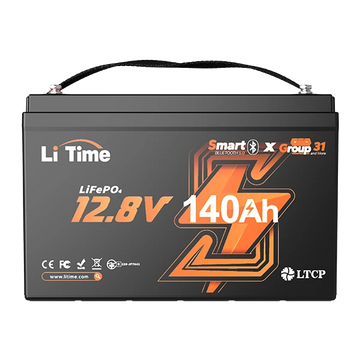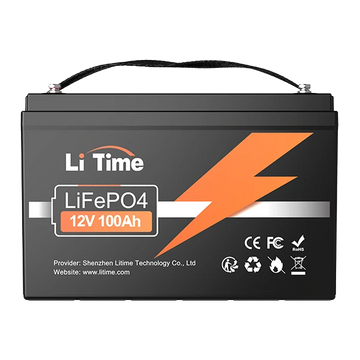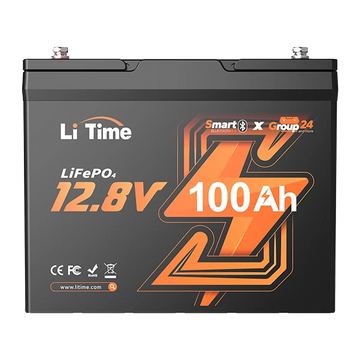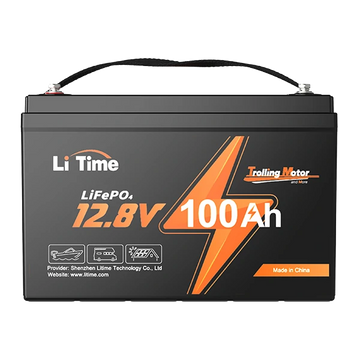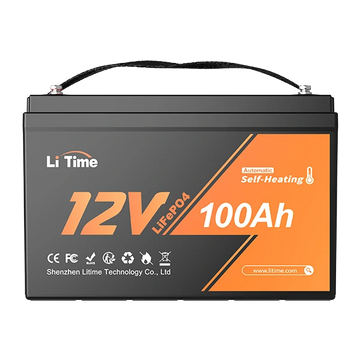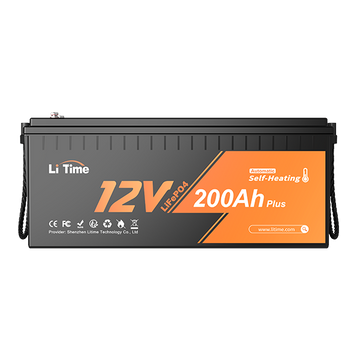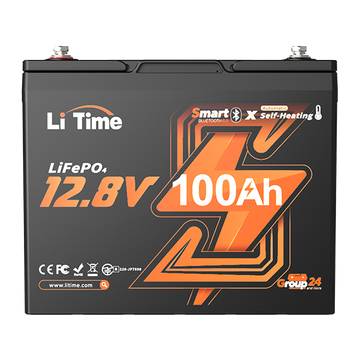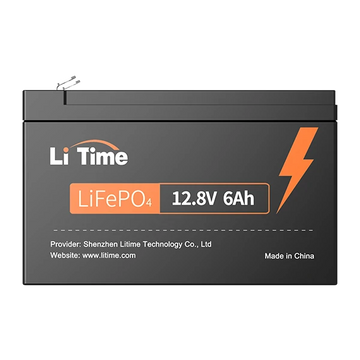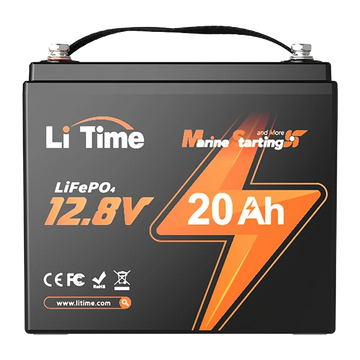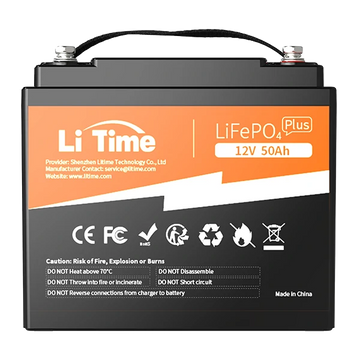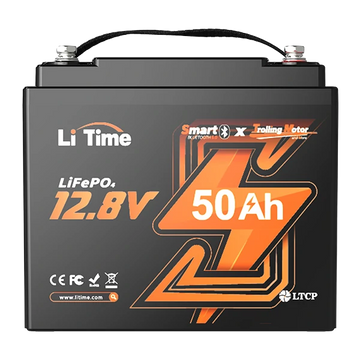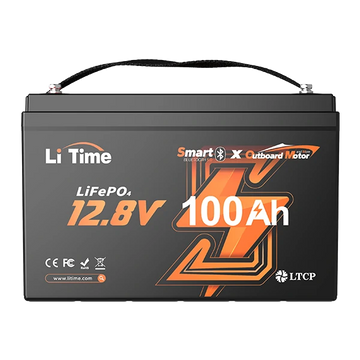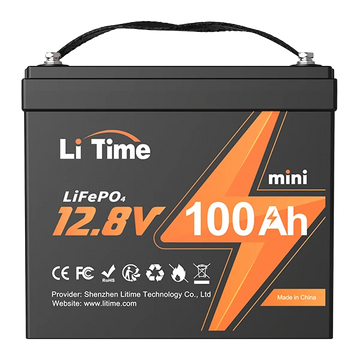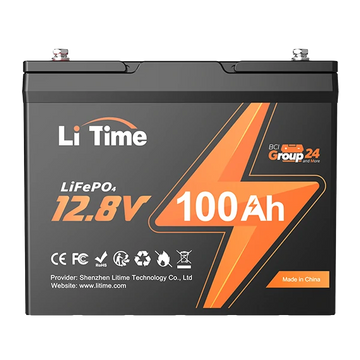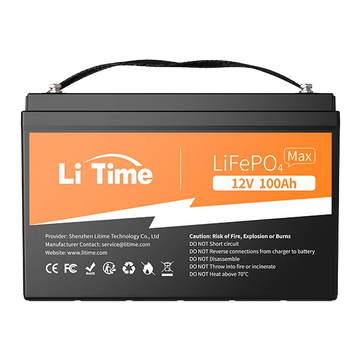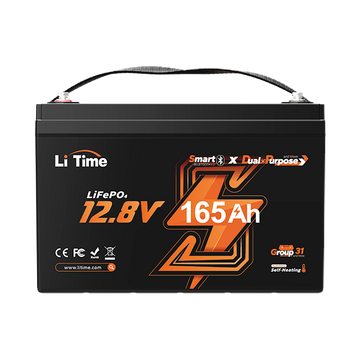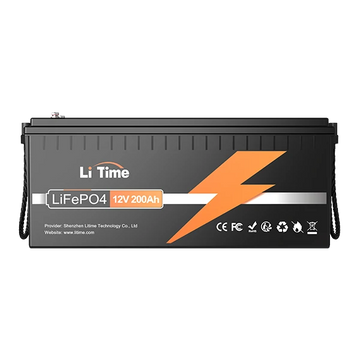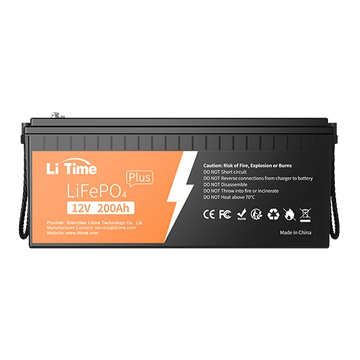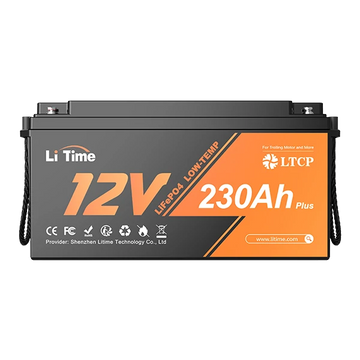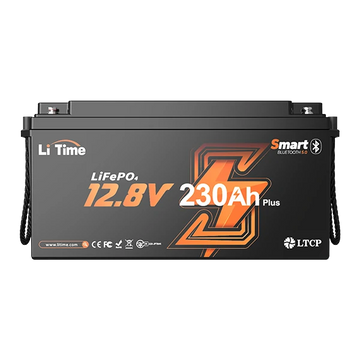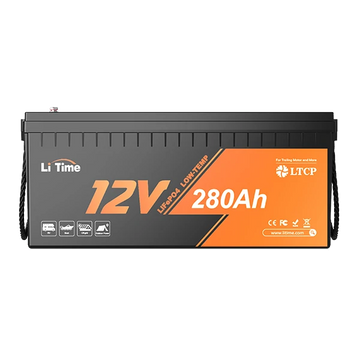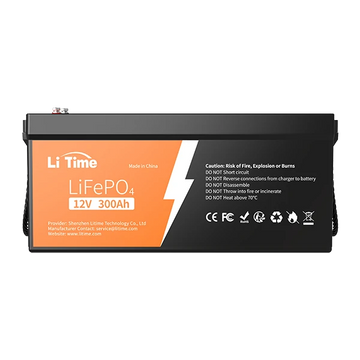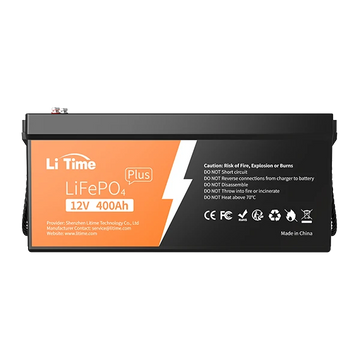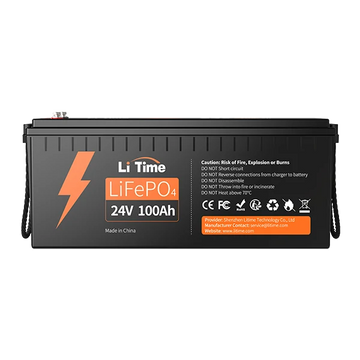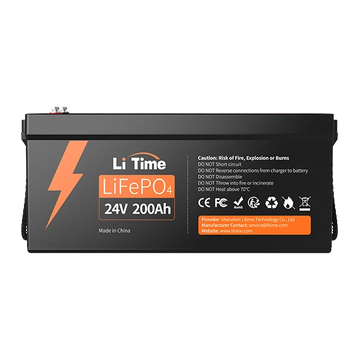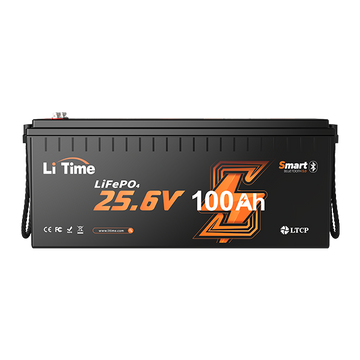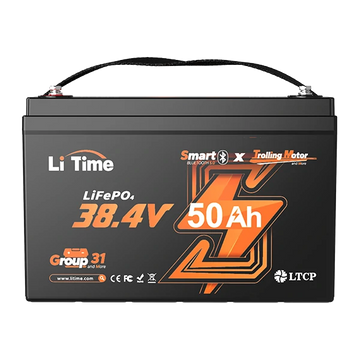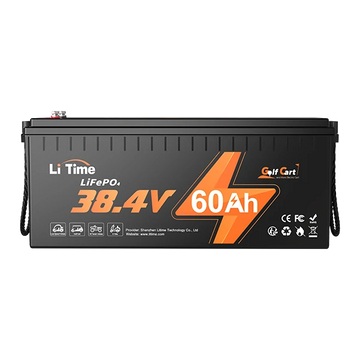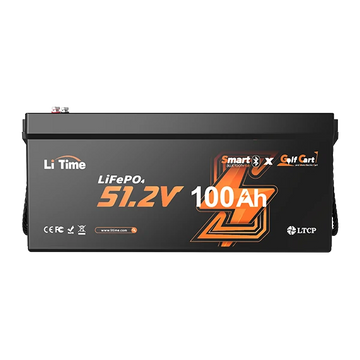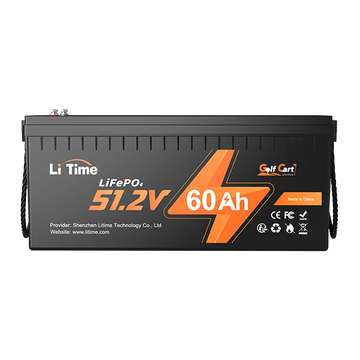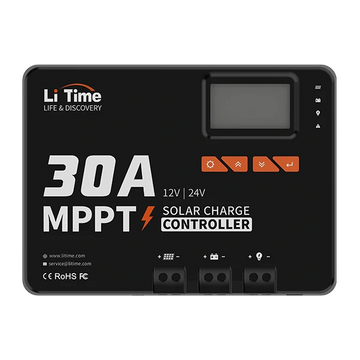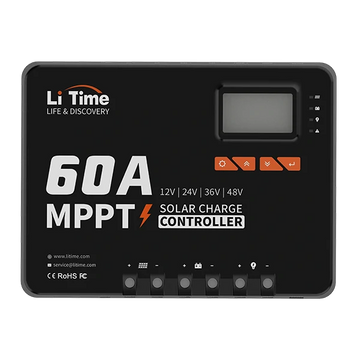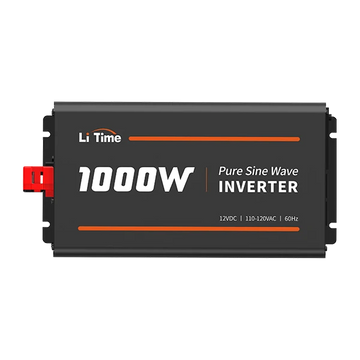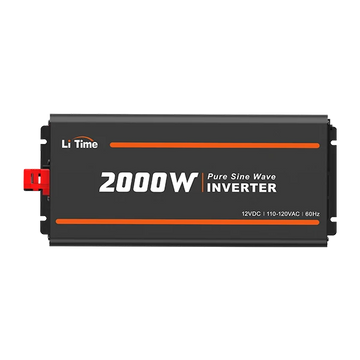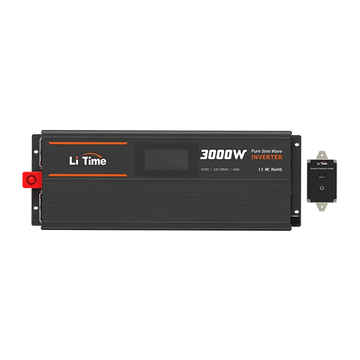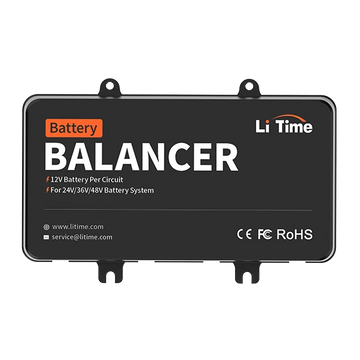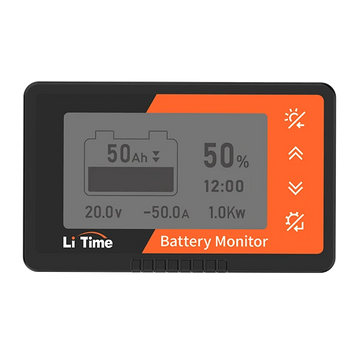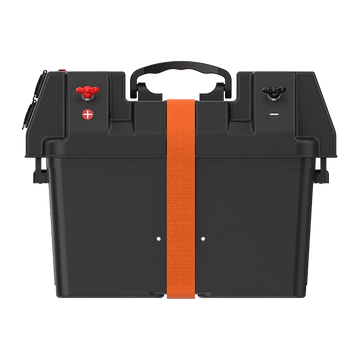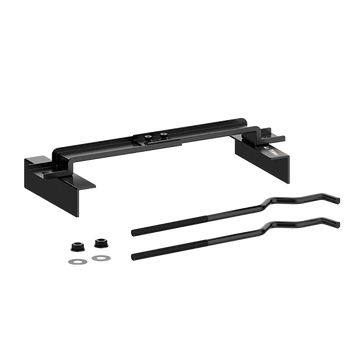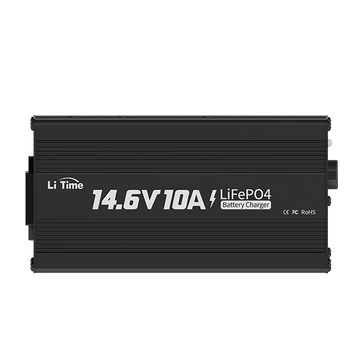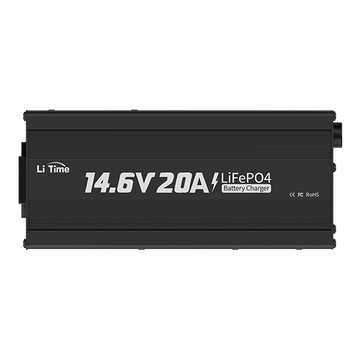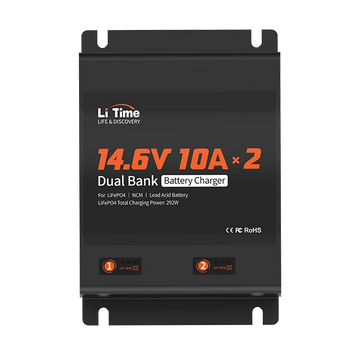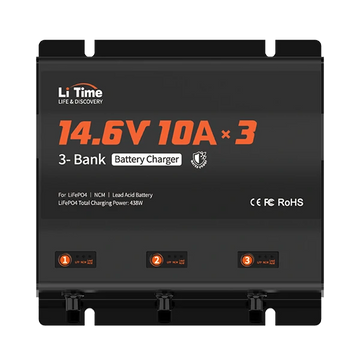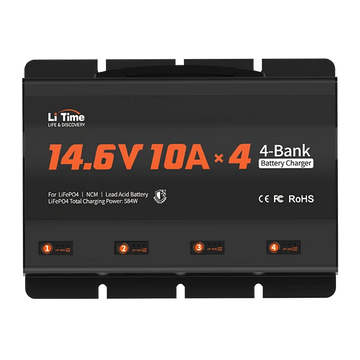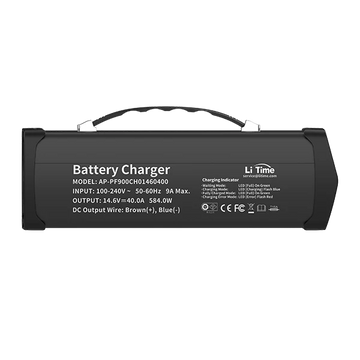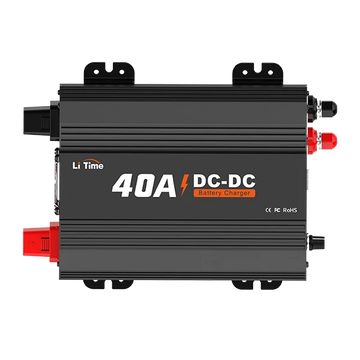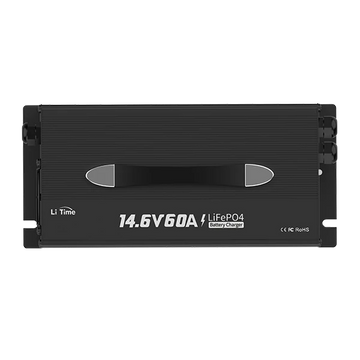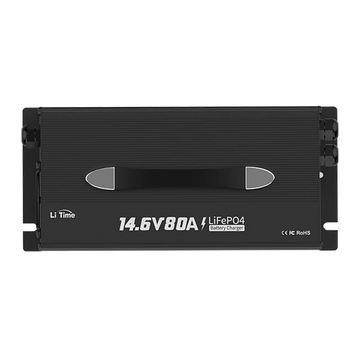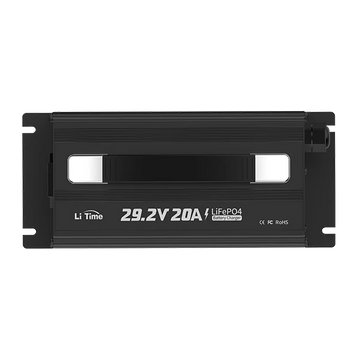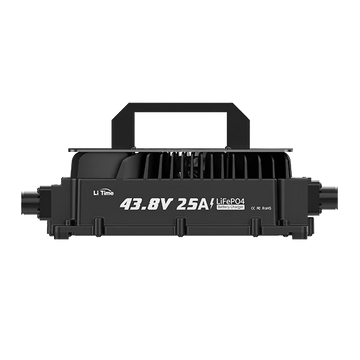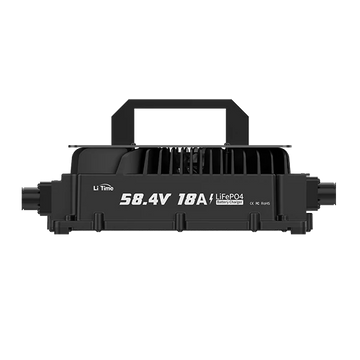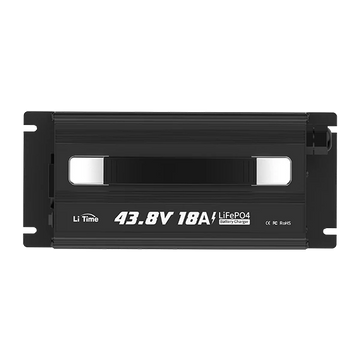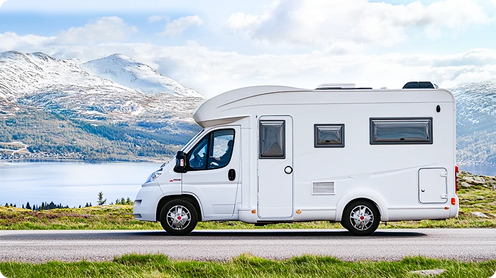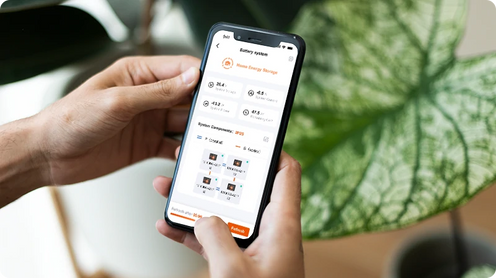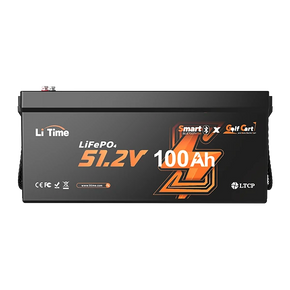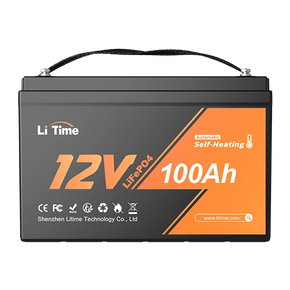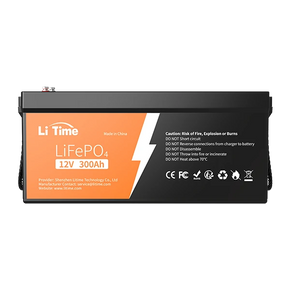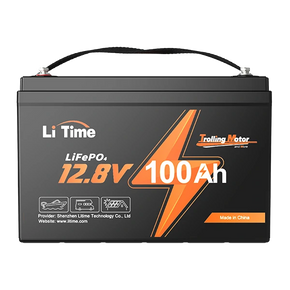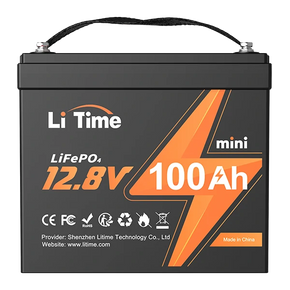If you own a golf cart in Canada, whether for recreational use on the course, local commuting, or everyday transportation, you'll inevitably need to address one key factor: battery selection and replacement.
Your choice of battery affects not only your driving range and performance but also your long-term costs and maintenance needs.
So, how much should you expect to spend on a golf cart battery? What are the different types available, and which one is the best fit for your needs?
This guide will walk you through golf cart battery pricing, lifespan, maintenance costs, and how to choose the most cost-effective solution.
Table of Contents
- 1. What Types of Golf Cart Batteries Are Available?
- 1.1 Lead-Acid Batteries: A Budget-Friendly Classic
- (1) Flooded Lead-Acid (FLA) Batteries
- (2) Sealed Lead-Acid (SLA) Batteries
- 1.2 Lithium Ion Deep Cycle Batteries: The Premium Option
- 1.3 Other Battery Types
- 2. How Long Do Golf Cart Batteries Last?
- 3. When Should You Replace Your Golf Cart Battery?
- 3.1 Noticeable Loss in Driving Range
- 3.2 Charging Takes Longer Than Usual
- 3.3 Physical Damage or Corrosion
- 3.4 Frequent Maintenance Issues
- 3.5 Final Tip
- 4. Should I Replace All My Golf Cart Batteries at Once?
- 5. How Much Do Golf Cart Batteries Cost?
- 6. 🔍 What Affects Golf Cart Battery Prices?
- 7. How to Extend Golf Cart Battery Life
- 8. Looking for a High-Performance, Long-Lasting Golf Cart Battery?
- 9. Conclusion
What Types of Golf Cart Batteries Are Available?
Golf carts typically run on either lead-acid or lithium-ion batteries. While both types provide power, they come with significant differences in performance, cost, and maintenance.
Choosing the right one depends on your budget, driving habits, and desired range.
1. Lead-Acid Batteries: A Budget-Friendly Classic
Lead-acid batteries are the most common option for golf carts, especially in standard models. Their affordable pricing makes them attractive, but they come with drawbacks like heaviness and frequent maintenance requirements.
Lead-acid batteries fall into two categories:
- Flooded Lead-Acid (FLA) Batteries
- Sealed Lead-Acid (SLA) Batteries (AGM & Gel)
(1) Flooded Lead-Acid (FLA) Batteries – The Cheapest Option
If you're looking for the most budget-friendly battery, flooded lead-acid (FLA) batteries are the most traditional and affordable choice. However, they require regular maintenance.
- Charging Time: Takes around 8 hours for a full charge.
- Maintenance Needs: Requires frequent water refills, cleaning of terminals, and corrosion checks.
- Best For: Users on a tight budget who don’t mind doing regular maintenance.
⚠️ Warning: If you fail to add water regularly, your battery could overheat, suffer premature failure, or even stop charging altogether.
(2) Sealed Lead-Acid (SLA) Batteries – A Low-Maintenance Alternative
Unlike FLAs, sealed lead-acid batteries require no water refilling and are maintenance-free.
There are two main types:
AGM Batteries – Faster Charging & Better Durability
AGM (Absorbed Glass Mat) batteries trap electrolytes in fiberglass mats, preventing evaporation and reducing the need for maintenance.
- ✅ Faster charging than FLA batteries
- ✅ Longer lifespan
- ✅ Better resistance to cold and vibrations
- ❌ More expensive than FLA batteries, but still cheaper than lithium-ion
- Best For: Those who want a maintenance-free option but don’t want to spend a fortune on lithium batteries.
Gel Batteries – Ideal for Harsh Conditions
Gel batteries function similarly to AGM batteries but use a gel-based electrolyte, making them even more resistant to leaks.
- ✅ Highly durable, resistant to shocks and vibrations
- ✅ Less prone to sulfation
- ❌ Slower charging speed
- ❌ Requires a specialized charger
- Best For: Golf cart owners in extreme climates (very cold or very hot environments).
2. lithium ion deep cycle batteries: The Premium Option
Lithium-ion batteries have gained significant popularity in the golf cart market in recent years. More and more new golf carts, including popular models like EZ-GO and Club Car, now come standard with lithium batteries. While these batteries are more expensive than their lead-acid counterparts, they offer a range of benefits that make them well worth the investment.
Key Advantages of Lithium Batteries:
- ✅ Maintenance-Free – No need to add water, clean terminals, or check for corrosion.
- ✅ Fast Charging – Charges up to 80% in just 1 hour, compared to 8 hours for lead-acid batteries.
- ✅ Longer Lifespan – Typically lasts 5–10 years, much longer than the 3–5 years of lead-acid batteries.
- ✅ Lighter Weight – More than 50% lighter, improving acceleration and reducing energy consumption.
- ✅ Consistent Power Output – Delivers stable performance even at low charge levels, unlike lead-acid batteries which degrade as charge drops.
- ✅ Smart Battery Management System (BMS) – Many high-end lithium batteries come with built-in BMS to monitor battery health and protect against overcharging, deep discharge, and overheating, ensuring long-term safety and reliability.
Potential Drawbacks of Lithium Batteries:
- ❌ Higher Initial Cost – Prices typically range from $800 to $1,500 or more per battery, depending on specs and brand.
- ❌ May Require Modifications – If your golf cart originally uses lead-acid batteries, you may need to replace the charger or adjust the battery tray to accommodate the lithium setup.
Best Use Cases:
- Users looking to reduce maintenance and extend battery range.
- Golfers who use their carts frequently and need fast recharge times.
- Users who prioritize performance and longevity and are willing to invest more upfront.
💡 Pro Tip: Some lithium battery brands offer companion smartphone apps that allow you to monitor battery level, health, and charging status in real time—making battery management easier than ever.
3. Other Battery Types
While there are other battery technologies on the market—such as nickel-metal hydride (NiMH) and supercapacitor batteries—lead-acid and lithium batteries remain the dominant choices for golf carts today.
For most users, the decision between lithium and lead-acid batteries comes down to budget and maintenance preferences.
If you're willing to spend more upfront and want to minimize ongoing maintenance, lithium is the smarter choice.
However, if you're on a tighter budget and don't mind a bit of upkeep, traditional lead-acid batteries still offer solid value.
How to Choose the Right Golf Cart Battery?
| Battery Type | Advantages | Disadvantages | Suitable Users |
|---|---|---|---|
| Flooded Lead-Acid (FLA) Battery | Low price, widely available | Requires periodic water refilling, cleaning, and long charging times | Users on a budget who can perform maintenance |
| AGM Sealed Lead-Acid Battery | Maintenance-free, faster charging, more durable | More expensive than FLA | Users who need durability but don't want maintenance |
| Gel Battery | No liquid leakage risk, durable | Longer charging time, high charging requirements | Users driving in extreme environments |
| Lithium-Ion Battery (Li-ion) | Maintenance-free, long lifespan, fast charging, lightweight | More expensive, some golf carts require modifications | Users who seek high performance and long-term use |
🔍 Final Recommendation: If you're looking to save money, lead-acid batteries are still a solid option. But if you want long-term reliability and less hassle, lithium batteries are the way to go.
How Long Do Golf Cart Batteries Last?
If you want your golf cart to run longer and more reliably, the most important factor is understanding and maintaining your batteries. Battery lifespan isn’t just about the brand or type—it also depends on how you use, maintain, and charge them. Generally, golf cart batteries fall into two main categories: lead-acid and lithium-ion, each with very different life expectancies.
⏳ Lead-Acid Batteries: 3–5 Years
- Typical Features: Lower upfront cost, ideal for budget-conscious users.
- Maintenance: Requires regular attention—topping up water, cleaning terminals, and checking for corrosion.
What Affects Lifespan:
- Usage frequency: Daily heavy use wears out batteries faster.
- Charging habits: Deep discharges (draining the battery too low) can drastically reduce battery life. Charging promptly and avoiding full depletion will help extend life.
- Maintenance quality: Low water levels or corroded terminals can lead to premature battery failure.
💡 Tip: If you're willing to put in some maintenance effort, a well-cared-for lead-acid battery can last 3–5 years—or even longer.
⚡ Lithium-Ion Batteries: 5–10+ Years
- Typical Features: Maintenance-free—no water refills or terminal cleaning needed.
- Fast Charging & Stable Range: Recharge quickly and deliver consistent performance.
- Compact & Lightweight: Improves acceleration and reduces overall energy use.
What Affects Lifespan:Extreme heat or cold can affect efficiency.
- Operating environment:
- Smart Battery Management System (BMS): Many lithium batteries come with a BMS that actively protects against overcharging, deep discharging, and overheating—further extending life.
- Charge/discharge cycles: Lithium batteries can handle significantly more charge cycles than lead-acid, which contributes to their much longer lifespan.
💡 Tip: While lithium batteries cost more upfront, their long service life and low maintenance often translate to lower total cost and time savings over the years.
When Should You Replace Your Golf Cart Battery?
Golf cart batteries aren't a "set-it-and-forget-it" component. Over time and with repeated charge-discharge cycles, performance naturally begins to decline. So how do you know when it's time for a replacement? Here are the most common warning signs:
1. Noticeable Loss in Driving Range
If your cart no longer runs as far as it used to or starts to feel underpowered during regular use, it's a strong indicator that your battery is nearing the end of its life. This often means the internal active material has degraded and can no longer store energy effectively.
2. Charging Takes Longer Than Usual
A battery that once charged in 6–8 hours may now take significantly longer. This suggests that the battery’s ability to absorb and store energy has deteriorated due to internal wear or damage.
3. Physical Damage or Corrosion
Visible signs of damage often mean the battery is unsafe or underperforming:
- Swollen casing: Caused by abnormal internal chemical reactions or overcharging.
- Leaking fluid: A sign of seal failure or cracked housing, which can pose safety risks.
- Corroded terminals: Rust or white powder buildup impairs electrical flow and shortens battery life.
If you notice any of these, stop using the battery immediately and consider a replacement to avoid further damage or safety hazards.
4. Frequent Maintenance Issues
If you're using a flooded lead-acid battery and find yourself constantly topping off distilled water—but still experiencing poor performance or fast discharges—it may indicate internal damage or irreversible capacity loss.
Final Tip
The smartest way to reduce long-term costs and keep your golf cart running smoothly is to act early. Don’t wait for total failure—if you're experiencing one or more of the issues above, it's probably time to replace your battery and restore your cart to peak performance.
Should I Replace All My Golf Cart Batteries at Once?
If your golf cart starts to lose range or performance, you might wonder:
"Can I just replace one battery instead of all of them?"
In most cases, the smarter choice is to replace all batteries at the same time. Here’s why:
1. Maintain Battery Pack Consistency
- Golf carts typically use multiple batteries connected in series or parallel to work as a unified system.
- Replacing just one battery introduces performance imbalance. The new battery may be dragged down by the older ones, reducing overall efficiency and potentially shortening the new battery’s life.
2. Save on Long-Term Costs
- While replacing all batteries at once comes with a higher initial cost, it helps you avoid staggered failures and repeat replacement charges over time.
- In the long run, a full replacement is more cost-effective and keeps your cart running reliably.
✅ Bottom Line: If your budget allows, replacing the entire battery set at once is the best move—it reduces future maintenance, preserves performance, and gives you peace of mind.
How Much Do Golf Cart Batteries Cost?
In Canada, golf cart battery prices are affected by exchange rates, shipping costs, and import duties, so they can vary by region and supplier. Below are general price ranges for reference:
🪫 Lead-Acid Battery Prices
- Flooded Lead-Acid (FLA): $150–$300 CAD per unit; Requires regular watering and basic upkeep; budget-friendly.
- Sealed Lead-Acid (AGM/Gel): $250–$400 CAD per unit; Maintenance-free, but more expensive than FLA.
⚡ Lithium-Ion Battery Prices
- Typically range from $800 to $1,500 CAD per unit, or even higher. While more costly upfront, lithium batteries last longer, weigh less, charge faster, and offer better long-term value.
💡 Tip: Golf carts often use 4, 6, or 8 batteries in total. Multiply the unit price by the quantity needed to estimate your total battery budget.
Additional Costs to Consider
When budgeting for new batteries, don't forget to factor in these possible extra expenses:
1. Battery Tray or Mounting Brackets
If the original tray is rusted or damaged, it may need to be replaced to keep the new batteries secure.
2. Battery Cables and Terminals
Old cables and terminals may be corroded or worn out. Replacing them ensures safe, efficient power flow and prevents voltage drop or connection issues.
3. Charger Upgrade
- Switching from lead-acid to lithium often requires a lithium-compatible charger, typically costing $200–$500 CAD.
- Each battery type has specific charging requirements. Using the wrong charger can damage your new batteries.
4. Disposal or Recycling Fees
In some regions of Canada, environmental disposal fees or core deposits apply when recycling old batteries. Ask your local dealer or recycling center about proper disposal practices.
💡 Budget Tip: Understanding these potential add-ons upfront helps you plan more accurately and avoid surprise costs during your battery upgrade.
🔍 What Affects Golf Cart Battery Prices?
Beyond market trends and exchange rates, several factors can significantly impact battery pricing and overall cost:
- 1. Battery Voltage and Capacity: Higher voltage and larger capacity (6V, 8V, 12V) mean higher cost.
- 2. Brand and Quality: Well-known brands like Trojan or US Battery offer better warranties and reliability—but at a higher price.
- 3. Number of Batteries Needed: Most golf carts use 4, 6, or 8 batteries—more batteries, higher total cost.
- 4. Installation Fees: Professional installation may cost $100–$200 CAD or more, depending on service complexity.
- 5. Shipping and Delivery: Batteries are heavy—remote areas may incur higher freight charges.
- 6. Maintenance Accessories: Add-ons like watering kits or anti-sulfation devices can improve performance but add cost.
💡 Tip: When comparing battery quotes, look beyond unit price. Be sure to include delivery, installation, recycling, and accessory costs for a complete picture.
How to Extend Golf Cart Battery Life
Whether you choose lead-acid or lithium batteries, good usage and maintenance habits are key to maximizing battery life:
- 1. Keep Batteries Charged: Charge your batteries after every use—don’t wait until they’re fully drained. Deep discharges reduce lifespan.
-
2. Perform Routine Maintenance:
- For lead-acid: Check water levels regularly, top up with distilled water, and clean terminals.
- For lithium: Usually maintenance-free, but keep them clean and avoid impacts or vibrations.
- 3. Use the Right Charger: Lead-acid and lithium batteries require different charging profiles. Use a compatible charger to avoid damage.
- 4. Avoid Extreme Temperatures: Hot and cold conditions can reduce battery performance. Store your cart in a cool, dry place if possible.
- 5. Don’t Let Batteries Sit Idle: Unused batteries can self-discharge and lose capacity. Run your cart occasionally even during off-season.
💡 Pro Tip: Smart charging and regular upkeep will keep your golf cart performing at its best while saving you money in the long run.
Looking for a High-Performance, Long-Lasting Golf Cart Battery?
Whether you're leaning toward budget-friendly lead-acid or long-lasting, low-maintenance lithium-ion batteries, the right choice and proper care will dramatically enhance your golf cart experience.
- Lead-Acid Batteries: Lower upfront cost and higher maintenance needs. A good option for budget-conscious users who don’t mind hands-on upkeep.
- Lithium-Ion Batteries: Higher initial investment but offer longer lifespan, faster charging, lighter weight, and minimal maintenance—making them more economical in the long run.
Why Choose LiTime LiFePO4 Batteries?
When selecting a golf cart battery, price isn’t the only factor. Voltage, brand reputation, quantity needed, installation, shipping, and long-term maintenance all affect total cost. That’s where LiTime’s LiFePO4 batteries stand out—offering unmatched performance, safety, and savings over time.
- ✅ Higher Voltage and Capacity: LiTime batteries come in multiple sizes (6V, 8V, 12V) to fit all golf cart models, offering higher energy density for longer, more reliable range.
- ✅ Trusted Brand with Proven Quality: LiTime is a top-tier lithium battery manufacturer. With up to 4,000–5,000 charge cycles, these batteries last over 4x longer than lead-acid models, saving money on replacements.
- ✅ Fewer Batteries Required: Thanks to higher energy density, you may need fewer LiTime batteries to achieve the same power output—lowering purchase and future replacement costs.
- ✅ Lower Installation and Maintenance Costs: LiTime batteries are plug-and-play and require no watering or terminal cleaning, unlike traditional batteries that need frequent servicing.
- ✅ Lightweight Design: Over 50% lighter than lead-acid batteries, reducing shipping costs and cart load for better energy efficiency and performance.
- ✅ Fast Charging: Fully charges in just 1–3 hours—much quicker than the 6–8 hours lead-acid batteries require—so you can hit the road or course faster.
- ✅ Built-in Smart BMS: Advanced battery management system protects against overcharging, over-discharging, overheating, and short-circuits—even in Canada’s harsh winters and hot summers.
LiTime Lithium Battery Upgrade Recommendations
- 1. LiTime 36V 60Ah Battery: Lightweight and efficient, this 2304Wh battery powers your cart up to 18–25 miles—twice the runtime of AGM batteries. Weighs 75% less than lead-acid with a built-in 120A BMS and supports 3 charging modes for flexible energy top-ups.
- 2. LiTime 48V 60Ah Battery: For superior range and hill-climbing power, this EV-grade battery delivers 3072Wh and supports 120A continuous and 350A peak discharge. It’s 77% lighter and 52% smaller than four 6V 210Ah lead-acid batteries—ideal for high-performance golf carts.
- 3. LiTime 48V 100Ah Bluetooth Battery: Monitor battery stats in real-time with Bluetooth 5.0 and the LiTime App. Its massive 5120Wh capacity powers up to 47 miles or 7–9 golf rounds. With 600A peak discharge, 20+ protection features, and low-temp charging support, it’s the smart choice for premium users.
All three LiTime batteries include a 5-year warranty, fast shipping, and 24/7 customer support. Upgrade your golf cart with confidence—choose LiTime and enjoy powerful, worry-free rides every time.
Conclusion
Whether you're going with cost-effective lead-acid or upgrading to high-efficiency LiTime LiFePO4 lithium batteries, the right battery will give your golf cart more range, power, and reliability. If you're looking to reduce replacement frequency and maximize long-term value, LiTime batteries are your best bet. Upgrade now and experience smoother, longer-lasting rides!
